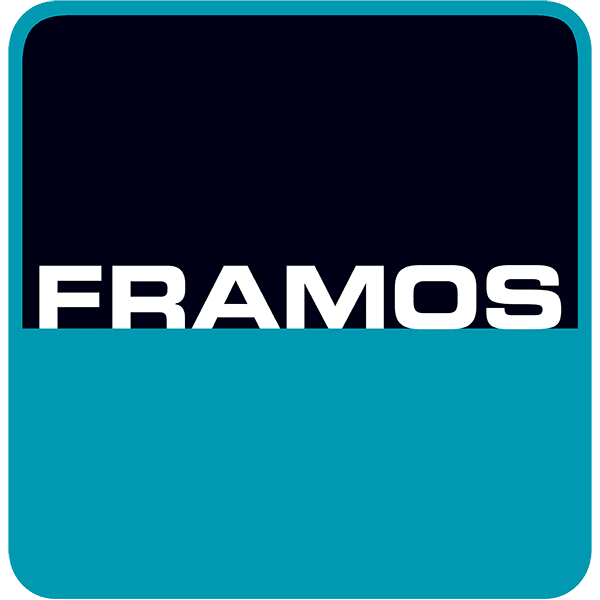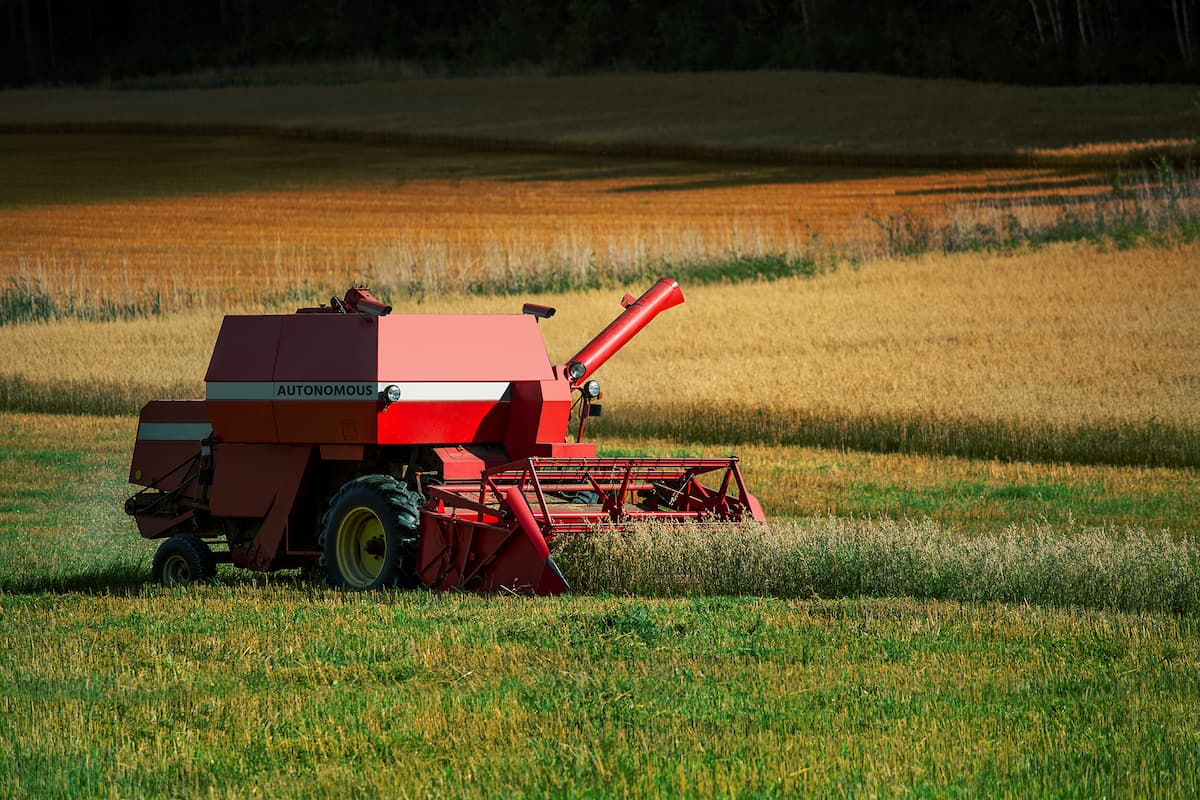Stereo cameras provide a versatile, affordable, and easily integrated depth sensing technology for different types of precision agriculture applications such as:
- Monitoring plant health
- Measuring crop yield
- Autonomous spraying or harvesting
Accurate depth perception and the ability to capture three-dimensional information about the environment makes 3D stereo cameras an ideal solution for different agricultural applications ranging from crop monitoring to vehicle guidance among rows.
Easily mounted on vehicles, drones, or fixed structures, stereo depth cameras easily retrofit the existing machinery without disrupting ongoing farming operations.
In this blog we will talk about the benefits of using stereo depth cameras in agriculture automation, give you some use cases, and present our FRAMOS D400 cameras based on Intel® RealSense™ technology and ruggedized to withstand agriculture environment conditions.
Monitoring Plant Health
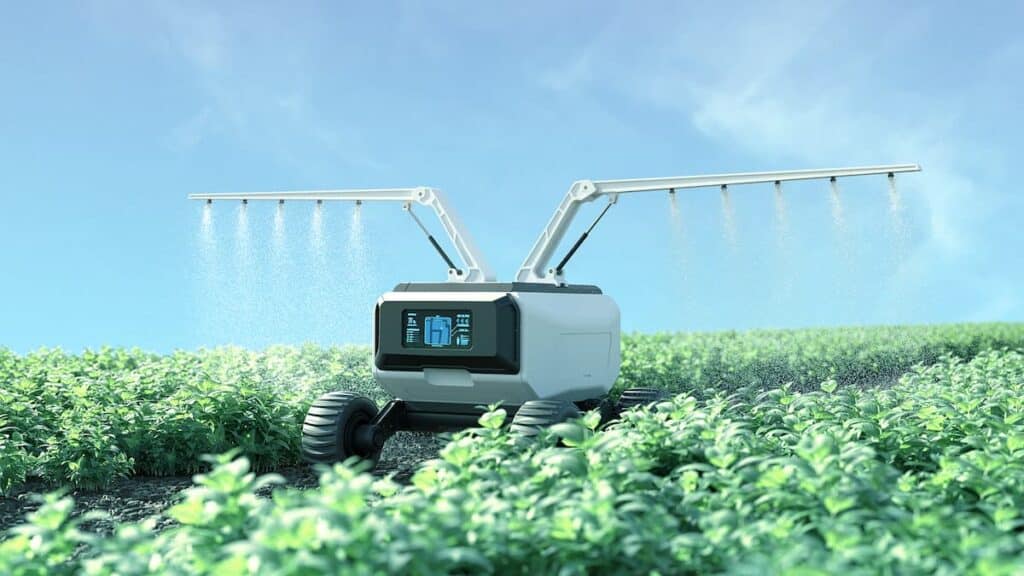
Monitoring plant health using stereo cameras can be performed individually for each plant in greenhouses, through self-driving vehicles to monitor crops on the fields or by using drones to monitor and map crop conditions on large scales.
By tracking changes in plant height, canopy size, leaf coloration, and leaf area, robot vision allows farmers to identify potential problems early on, such as pests, diseases, or nutrient deficiencies.
Stereo cameras, with their integrated RGB camera and depth perception capabilities, provide high-quality data for machine learning and AI solutions software, assisting experts in developing targeted treatments.
One great example of using 3D vision in smart agriculture, combining monitoring and autonomous work, is a weeding robot. It can detect and spray only weeds, saving money and decreasing herbicide use up to 90%.
Industrial depth cameras provide high-quality image inputs for monitoring, but also serve as robotic vision devices, allowing robots to autonomously perform tasks based on detected problems. Using one technology for multiple use cases – monitoring, self-driving, autonomous work – simplifies the system leading to easier maintenance.
Autonomous Navigation Systems
Most autonomous vehicles designed for applications in smart agriculture rely on global positioning system (GPS) data for navigation. However, the effectiveness of GPS navigation can be challenging on farms due to signal occlusion issues.
One of the most feasible options to solve that problem is combining GPS with stereo cameras. When enhanced with stereo 3D and their integrated Inertial Measurement Unit (IMU), GPS systems achieve centimeter precision, which is extremely important for machinery operating in proximity of critical farming infrastructure such as irrigation lines, and valuable crops.
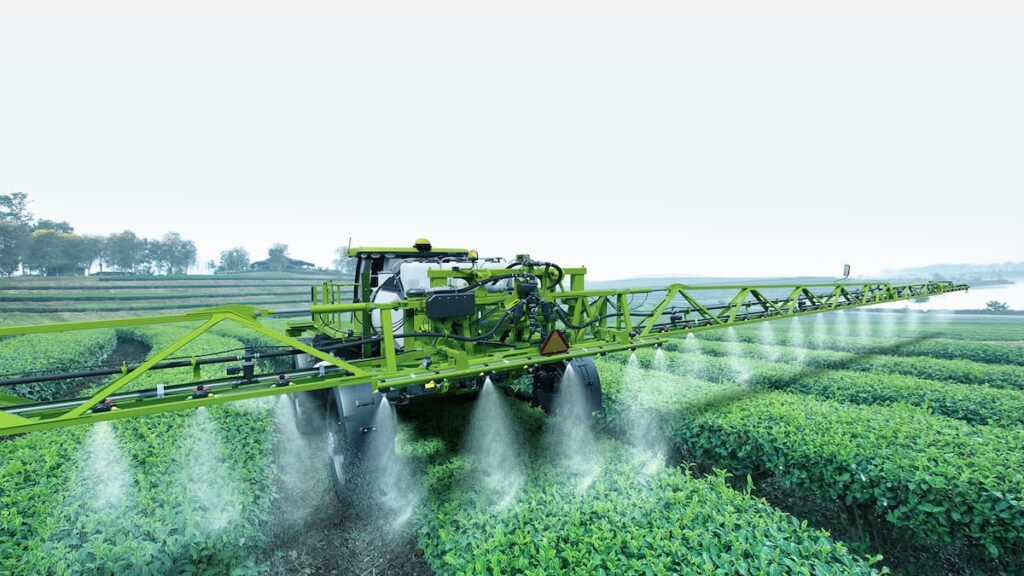
Combining GPS with stereo depth cameras allows the autonomous system to perceive its surroundings in real-time and adjusts its navigation accordingly. That is is far more efficient option when compared to solutions using April tags, QR codes, or other localization symbols commonly used in warehouses, but that are unavailable in outdoor farms.
Some FRAMOS D400E cameras include inertial measurement unit (IMU) for refined depth awareness, equipping robots with dynamic obstacle avoidance capabilities, and an IR projector for nighttime operation, helping AVGs in greenhouses operate at maximum reliability and perform tasks 24/7.
Besides ensuring safe navigation, these cameras enable machines to autonomously perform key agricultural activities such as cultivating, plowing, planting, fertilizing, and harvesting.
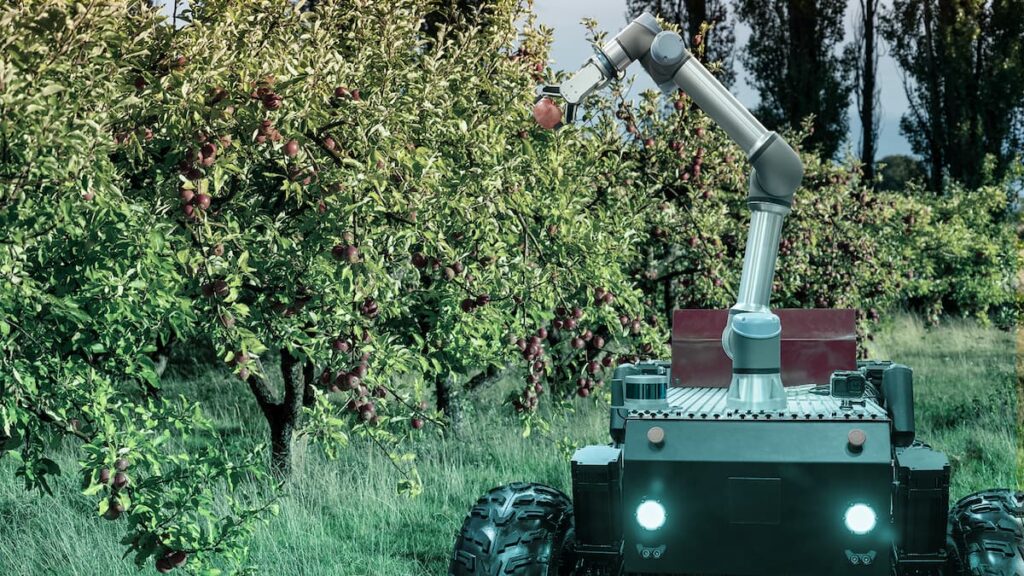
Tractors, forklifts, or other autonomous machinery built with depth technology can operate in fleets, reducing costs, improving efficiency, and coordinating work to avoid bottlenecks or collisions.
Tow-togs Retrofitted with Depth Cameras: Case Study
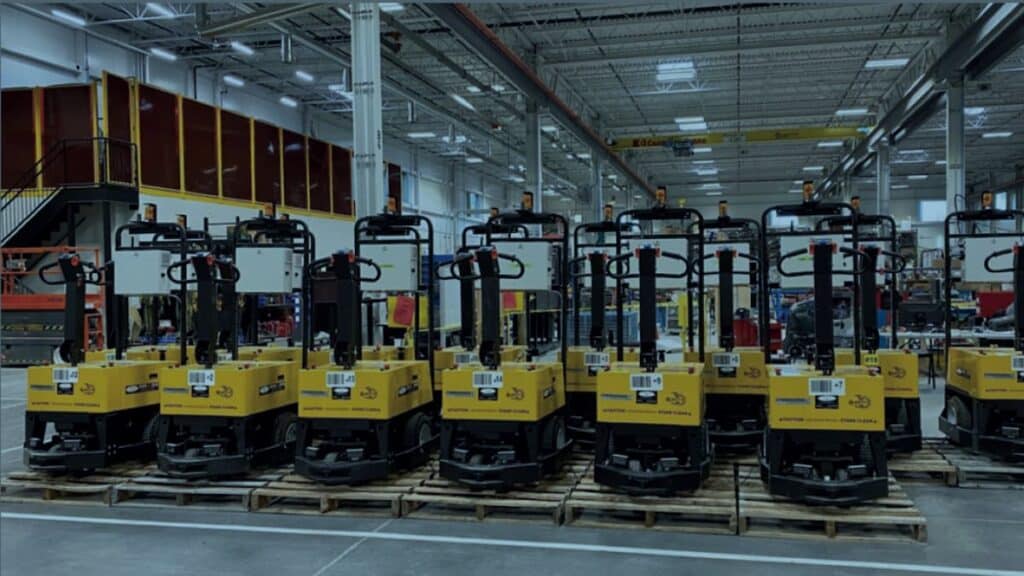
One great example of using stereo depth cameras to develop autonomous vehicles is a project by our client, Cyber Robotics.
They developed an agricultural electric tow-tugs fleet, performing complete driverless operations in Fernlea Flower greenhouses.
The existing fleet was retrofitted with stereo depth cameras, saving money, and optimizing the existing resources. Retrofitted fleet significantly improved safety in Fernlea Flowers greenhouses while increasing efficiency and lowering costs.
Read more here.
Autonomous harvesting
When paired with sophisticated machine learning algorithms, 3D cameras can help differentiate between ripe and unripe produce and enable robotic arms or other automated equipment to selectively harvest crops based on size, color, and other customizable parameters.
The precision and speed of autonomous harvesters optimize harvesting operations and increase their efficiency while reducing costs. Thanks to strong low light performance, harvesting can be performed 24/7, which helps farmers handle harvesting season with better results.
Alongside autonomous harvesters, agricultural companies use stereo-depth technology to develop crop packaging robots, fully automating the process and enabling fresh produce to be delivered to end-consumers faster and thus in a better condition.
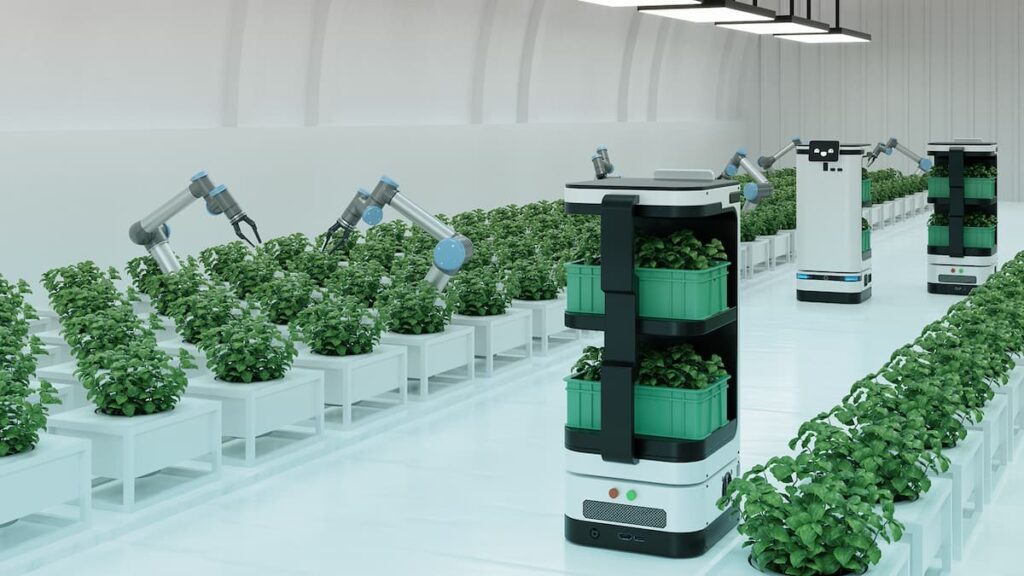
When paired with sophisticated machine learning algorithms, 3D cameras can help differentiate between ripe and unripe produce and enable robotic arms or other automated equipment to selectively harvest crops based on size, color, and other customizable parameters.
The precision and speed of autonomous harvesters optimize harvesting operations and increase their efficiency while reducing costs. Thanks to strong low light performance, harvesting can be performed 24/7, which helps farmers handle harvesting season with better results.
Alongside autonomous harvesters, agricultural companies use stereo-depth technology to develop crop packaging robots, fully automating the process and enabling fresh produce to be delivered to end-consumers faster and thus in a better condition.
The versatility of stereo depth technology provides affordable and easily implementable solutions, covering crucial precision farming applications, from gathering data and developing targeted treatments to fully autonomous tasks fulfillment.
Advantages of Intel ® RealSense™ technology for Precision Farming Solutions
One of the most advanced stereo depth technologies for agriculture applications is Intel® RealSense™ Depth cameras
Besides standard stereo vision technology, these cameras are equipped with additional equipment, enhancing performance in precision farming applications.
The inertial measurement unit (IMU) refines depth awareness, while dynamic obstacle avoidance improves safety performance. The Intel RealSense depth cameras also come with a global shutter that reduces distortion of the RGB image and improves correspondence between the depth and RGB images.
A near-infrared projector, also known as an illuminator, enables the camera to capture depth data even in total darkness, which effectively doubles the useful work time of the robot. Or it allows it to perform two duties – grass during the day and then do security work at night, accelerating the return of the investment.
Another important feature of Intel ® RealSense™ depth cameras is processing the depth data within the camera, without burdening the robot’s CPU, allowing the use of less expensive and sophisticated processing platforms.
FRAMOS D400e Stereo Depth Cameras: Sophisticated RealSense™ Technology Ruggedized into Robust Agriculture Imaging Solutions

The demanding conditions within agricultural settings, including vibrations, stress on camera cables caused by various movements, and frequent repositioning, require ruggedization to protect sophisticated technology from harsh environments.
Exposure to dust, soil particles, chemicals, and potential encounters with water can lead to operational issues, distortion in image output, or even damage to the camera equipment.
FRAMOS cameras combine Intel® RealSense™ technology with industrial-grade housing and connectivity addressing farming condition challenges.
Our cameras provide high image quality and stable transmission while withstanding the harsh environments of greenhouses and fields.
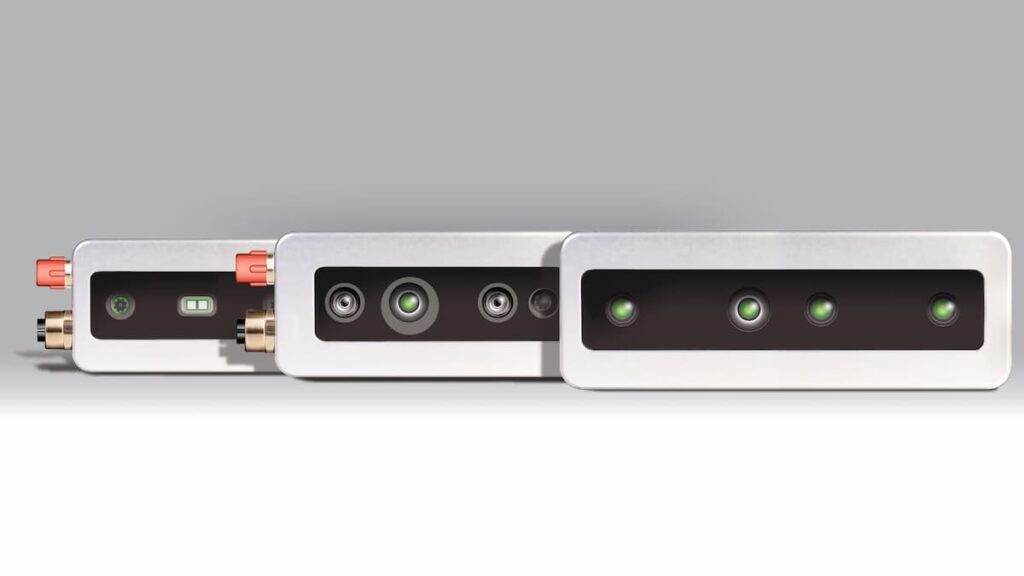
Key Features
- IP66 Rated Rugged Enclosure: The camera is encased within a rugged housing with an IP66 rating, providing robust protection against dust, water, and physical impacts.
- Efficient Power over Ethernet (PoE): The FRAMOS D400e reduces cable clutter by supporting PoE (Power over Ethernet) power.
- The longer cable lengths – up to 100 m (about 328.08 ft) allow – the camera to be placed at a greater distance from the processing computer.
- Secure M12 and M8 Connectors ensure safe and durable connections for reliable performance in the harshest and most demanding agricultural conditions.
- Effortless Installation: The compact camera design and mounting points on the backside simplify installation and make camera mounting hassle-free.
The FRAMOS D400e cameras maintain the sophisticated imaging standards associated with RealSense™ technology while enhancing their resilience against dust, water jets, and other challenges inherent to agricultural environments.
To find out more about FRAMOS D400e ruggedized cameras, please follow this link.
You can read more about other sensing technologies used in precision agriculture here.
If you have any questions about any sensing technology or need a trusted partner in your agriculture device development process – feel free to contact us.
Working with a trusted vision partner streamlines your development, saves money, and reduces time-to-market. We will be happy to help you with all the vision challenges, from ideation to production processes.
Intel, the Intel logo, and Intel RealSense are trademarks of Intel Corporation or its subsidiaries.
